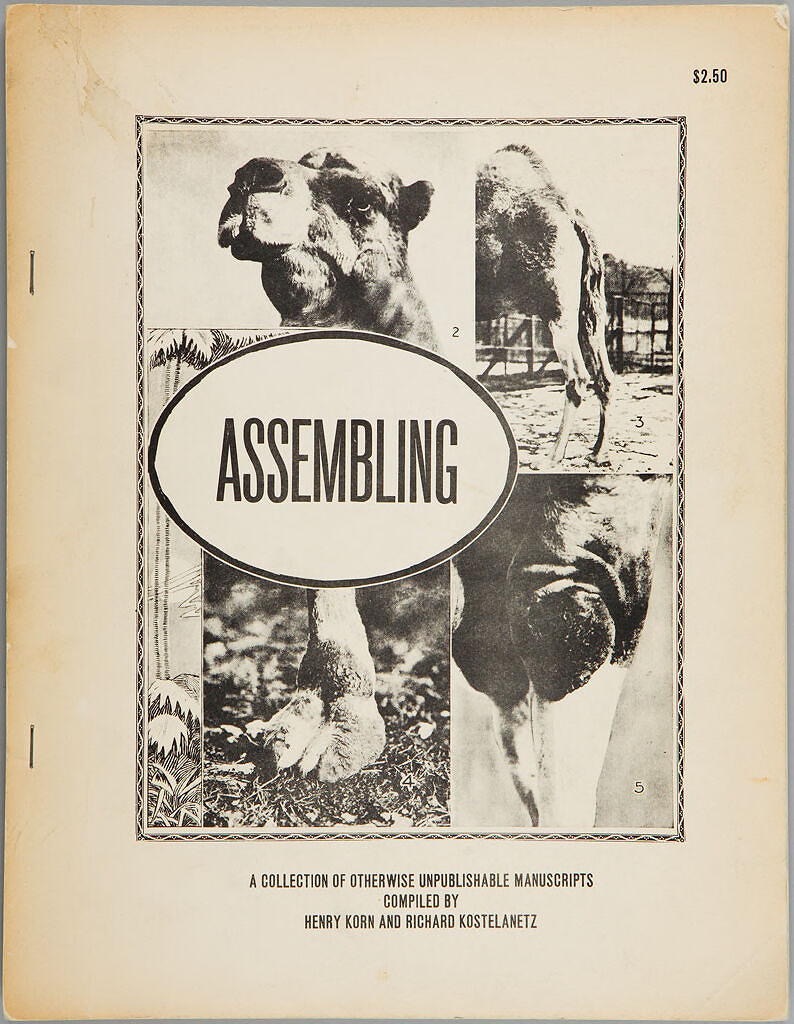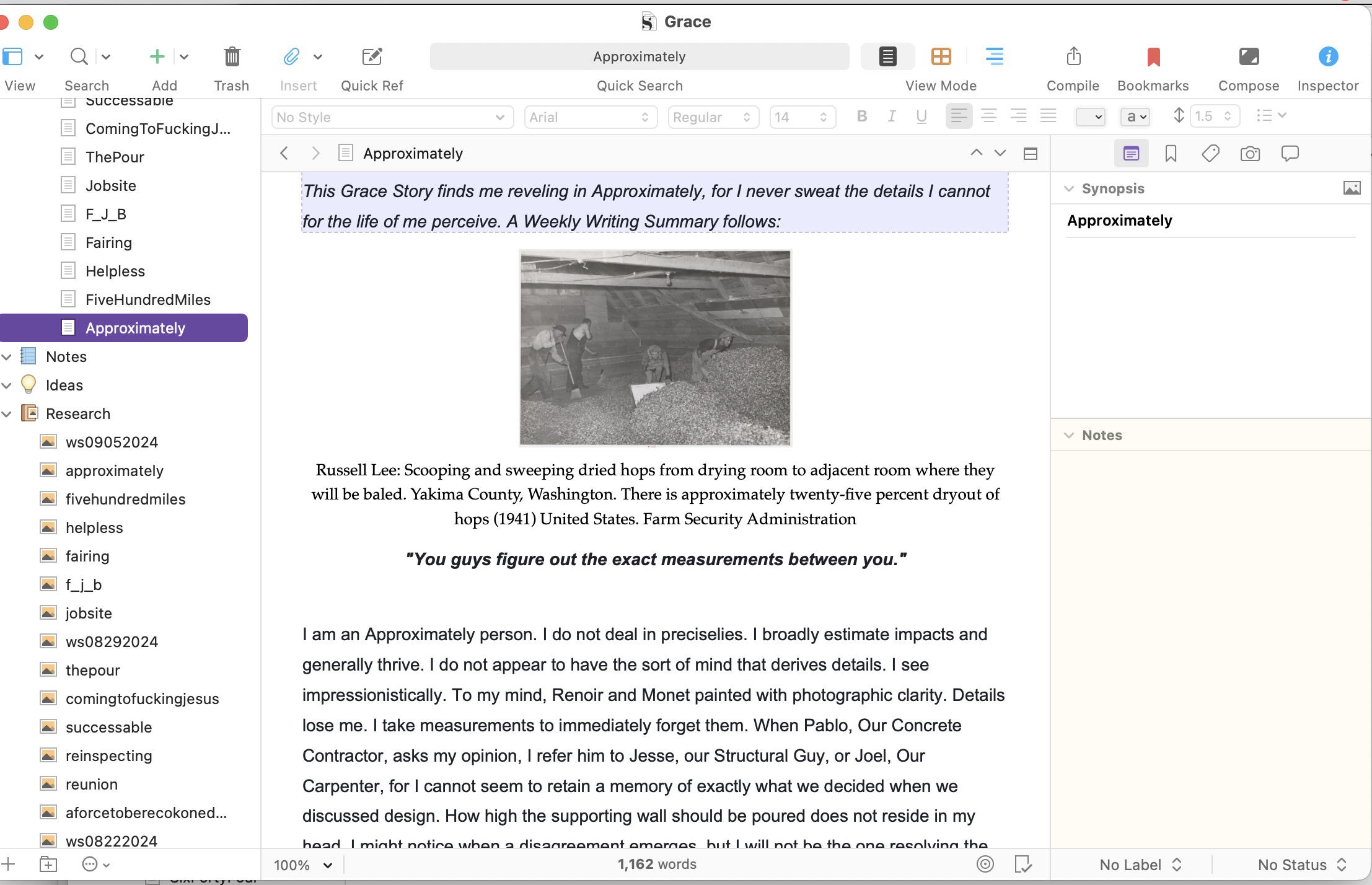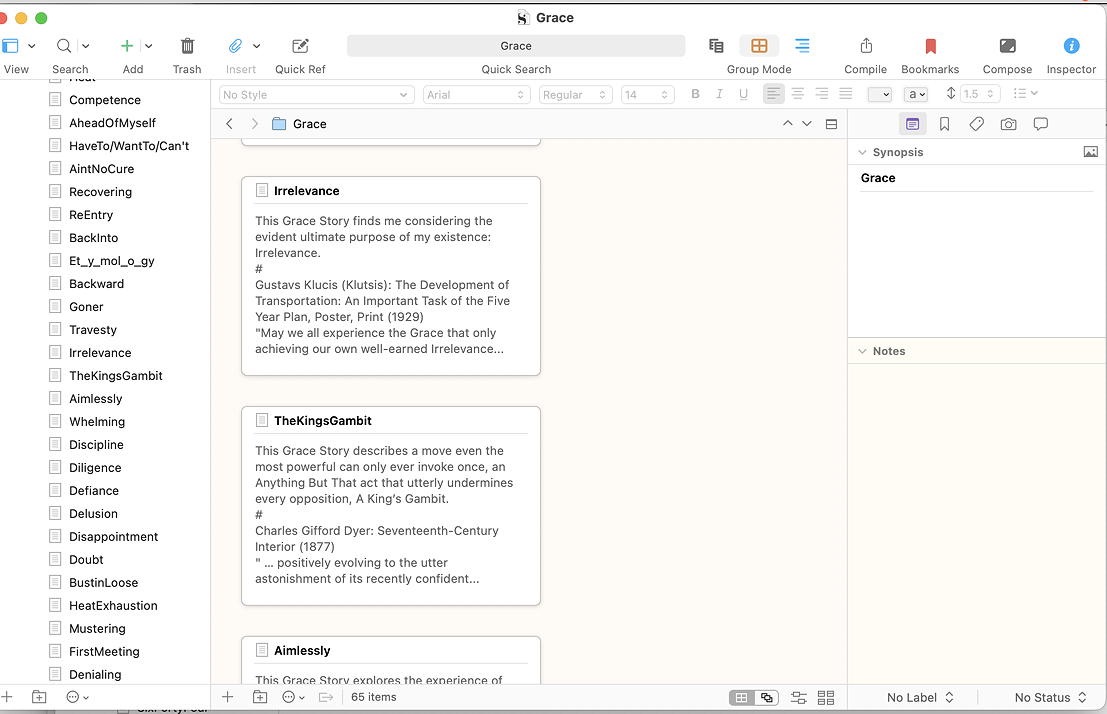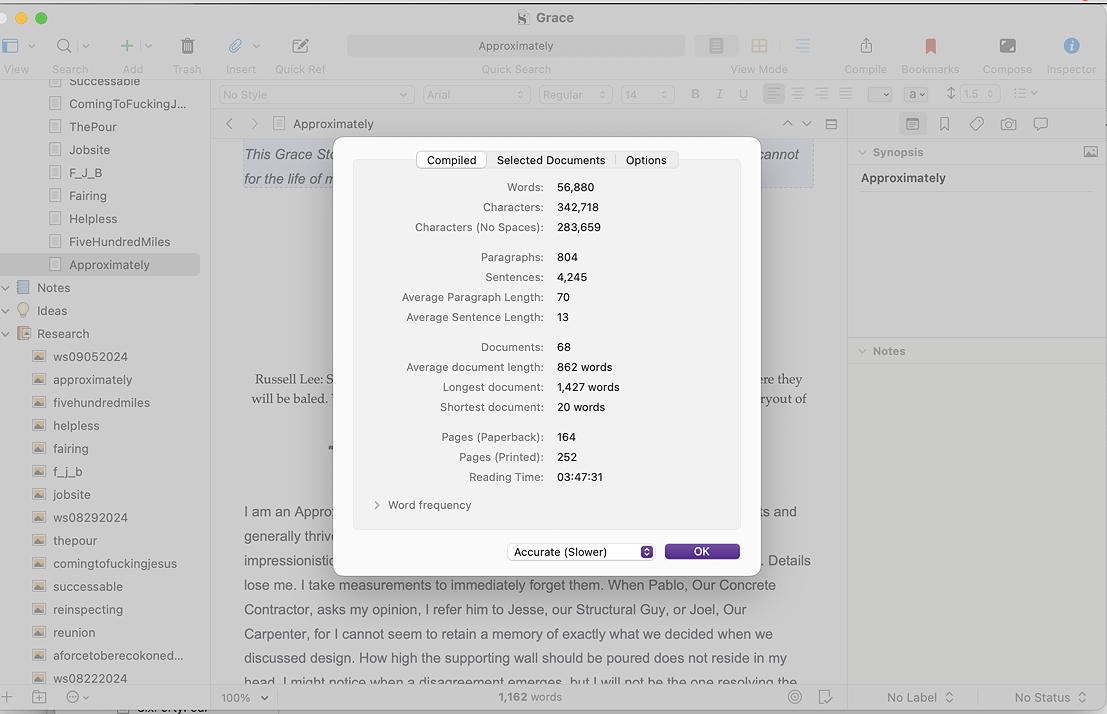Assembling

Edward Ruscha: Chocolate
[Series/Book Title: Assembling, vol. 1,
Henry Korn and Richard Kostelanetz, compilers
Brooklyn: Gnilbmessa inc. (1970)
" … genuinely qualifies as work worthy of shirking."
The final fortnight of each quarter, my thoughts turn to Assembling. If disciplined in my writing that quarter, I will have completed ninety stories, each written under the presumed aegis of that quarter's theme or stated purpose. This quarter, I've been writing Grace stories, though not every piece necessarily seems on topic. If I squint, I can see how I interpret each piece to have fully satisfied its theme, though I seem like an over-insistent assistant district attorney prosecuting my case. Assembling involves bringing each story together in one place so that it might appear to be a manuscript where I can number pages and list chapters in a Table of Contents. The manuscript amounts to the least helpful form for every purpose except one, that of publishing.
Given that I have not published any of the stories I've been creating over the last twenty-nine quarters, I've primarily considered Assembling an optional activity. I've assembled most of the twenty-eight finished series, but I have not kept a comprehensive listing of them, nor could I readily locate the master copies even if pressed. I have taken this completion step as deferrable, though I've always known that the longer I defer this work, the more impossible it will become. Recent improvements in my writing process make Assembling less of a hassle, though it still requires hours of focus. It largely involves volumes of cutting, pasting, and consistently formatting. If I've learned anything from writing so many series, a template helps. I keep formatting to fewer than a half dozen choices. Almost everything ends up as Body style, with an Introduction, a Caption, and what I call a Buried Lede, along with a few Heading 1 and Heading 4 elements, consistently used when needed.
This work is accomplished via software. I need to perform very little retyping because I take great care when creating each story. If I maintain discipline when creating, Assembling it into manuscript form becomes relatively simple. I still might have to open three or four applications and copy and paste between them to achieve my mission, but I've gratefully eliminated the need to scour back through old FaceBook postings, which was part of my prior process. I've learned to store the images in their own folder, the current one titled "Grace Images," with each illustration named the same as its associated story. This serves as my index for the assembly process. Each story combines the introduction, which does not appear in the blog copy of the piece but only in an associated FaceBook posting with links and, over the last few quarters, also in my SubStack and LinkedIn copies.
SubStack, which I began using when I was experiencing trouble using my base Blog software, RapidWeaver, started as a distraction but has since become a godsend. It added redundancy to my posting work, adding fifteen to thirty minutes to each morning's effort. Still, it has turned out to be much easier to reference and copy and paste out of than either RapidWeaver or Facebook ever was. Further, I use it as the beta test of each day's posting. Since my grammar tester works there, I paste each day's story there, then perform my grammar edits and have the machine read the piece back to me before copying and pasting the result back to RapidWeaver for posting. In order, I first post my RapidWeaver version, then the SubStack one, and then I post the Facebook link with the introduction and links to both versions. I then post a copy of the Facebook invitation with links to LinkedIn, the most obscure and least valuable platform, since I still don't know what it's for and have never learned how to use it. It features a particularly opaque user interface, though I maintain a few hundred active readers there each week.
I assemble these messes using Scrivener®, a terrifically difficult piece of software. I've been an active user for over a decade and still feel I've barely scratched the surface using it. I strive to keep my manuscripts shit-simple because more complicated ones create trouble. I cannot reliably turn on page numbering and need to relearn many functions each time I try to use this system, but I know of no other better alternative. I offer a few screenshots below that might help illustrate what Assembling entails. Each story or chapter takes me a few minutes to complete Assembling. This is repetitive work and carries a rhythm. It's mindless enough that I can sometimes do it while listening to a podcast or some music tracks. Each manuscript requires a few hours of this Assembling work. It's mind-numbing enough to often convince me to avoid it. In the final two weeks of each quarter, though, my work comes looking for a perch. Creating the manuscript might be the only effort associated with writing these stories that genuinely qualifies as work worthy of shirking.

Scrivener Manuscript after formatting
Scrivener manuscript in quick reference mode
Scrivener manuscript after compiling into sharable form
Scrivener stats associated with a successful compiling
©2024 by David A. Schmaltz - all rights reserved


